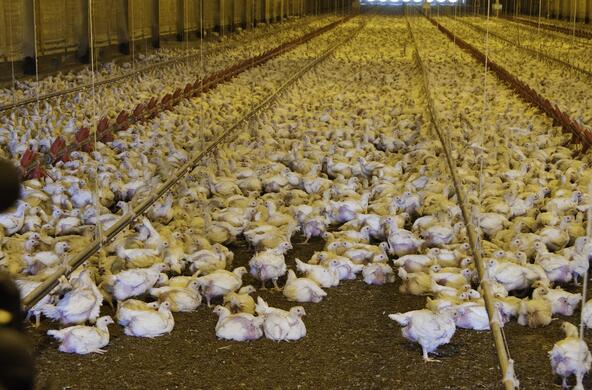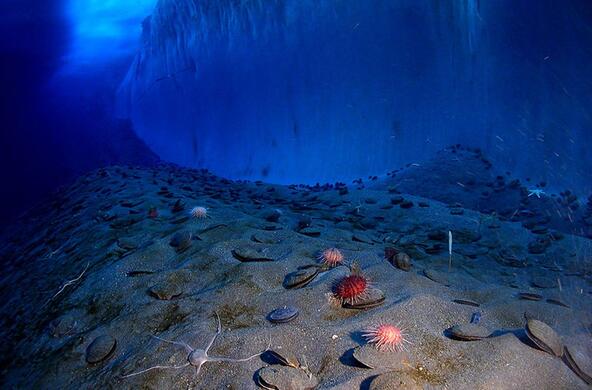It’s a midsummer Saturday afternoon. I can hear the drone of two-cycle lawn mower engines throughout the neighborhood. Just like last weekend and the weekend before. It’s time for Americans to forsake their lawns.
Let the grass spring up tall, let its roots sing
and the seeds begin their scattering.
Let the weeds rejoin and be prolific throughout.
Let the noise of the mower be banished, hurrah!….
Mary Oliver—“On Not Mowing the Lawn,” Blue Horses, 2014
What I mean to say is that unless you are an avid fan of croquet, lawn tennis, or summer garden parties, it’s time to let your lawn go natural. A wild yard is not un-American; it’s what the pilgrims had when they first arrived in New England. For nearly all of us, today’s obsession with the perfect, park-like lawn is a waste of time and money and bad for the environment.
By a recent count, 80% of American households have a lawn, which collectively cover an area about the size of the state of North Carolina. Anthropologists tell us that settlers in wilderness areas cleared around their dwellings to reduce marauding varmints and vermin. Today, I suppose neighborly peer-pressure may also motivate excessive lawn care. And some homeowners sense a feeling of grandeur by a vast tract of mowed lawn about their house. These motivations must be powerful: How else could we be fooled into thinking that surrounding our house with a manicured expanse of genetically-modified Kentucky bluegrass is a good diversion of time and money?
Here’s the scenario: in spring we begin to mow the lawn weekly, using fossil fuels. The grass clippings are often bagged and removed as trash. In summer, we must water the lawn; if you are on a well, lawn watering depletes the groundwater. In fall, we rake and sweep fallen leaves from the lawn and often remove them from the yard, depleting the soil of nitrogen, phosphorus and other minerals that plants need. So the following year we must fertilize. Nitrogen fertilizer is one of the most energy-intensive products known, made by the combustion of natural gas under high temperature and pressure.
Suburban lawns accumulate carbon in the soil, but the emissions of carbon dioxide by human activities and the products that are used to maintain the lawn must be subtracted from the uptake to calculate the true net removal of carbon dioxide from that atmosphere. The caloric content of carbon stored in the soil can easily be expended in the use of fossil fuels to maintain a lawn. In the eastern United States, a natural landscape is usually more efficient at carbon storage. If you like, plant a hardy ground cover that requires no regular maintenance or chemical inputs. Or, as we have in our house in Maine, let the surrounding area become meadow.
Most lawns, indeed most yards, are maintained at an unnaturally low level of biological diversity, largely through the use of herbicides on the grass and by the removal of shrubby vegetation that might invade it. A more diverse natural landscape would maintain populations of natural predators of insects and other pests. In their absence, we often use pesticides to maintain a desired “healthy” look to our landscape. Pesticides inadvertently reduce the populations of soil microbes, earthworms, and other organisms that maintain natural fertility. And, of course, rain washes some portion of those pesticides, herbicides and fertilizers to local streams, eventually leading to the pollution of major rivers and groundwaters that are our source of drinking water.
In a world where time is short and the price of fossil fuels is rising, I can’t really think of any good reason to maintain a park-like suburban lawn. Let it go: you’ll enjoy the return of wild songbirds to your yard. Relax and feel like you’ve returned to nature—something many Americans pay dearly for by traveling to “natural” vacation spots. Meanwhile, back at home, their lawns suck up time and money.
References
Bormann, F.H., D. Barnori, and G.T. Geballe. 2001. Redesigning the American Lawn: a search for environmental harmony. Yale University Press, New Haven
Falk, J.H. 1976. Energetics of a suburban lawn ecosystem. Ecology 57: 141-150.
Falk, J.H. 1980. The primary productivity of lawns in a temperate environment. Journal of Applied Ecology 17: 689-696.
Kaye, J.P., R.L. McCulley and I.C. Burke. 2005. Carbon fluxes, nitrogen cycling, and soil microbial communities in adjacent urban, native, and agricultural ecosystems. Global Change Biology 11: 575-587.
Raciti, S.M., P.M. Groffman, J.C. Jenkins, R.V. Pouyat, T.J. Fahey, S.T.A. Pickett, and M.L. Cadenasso. 2011. Accumulation of carbon and nitrogen in residential soils with different land-use histories. Ecosystems 14: 287-297
Selhorst, A., and R. Lal. 2013. Net carbon sequestration potential and emissions in home lawn turfgrasses of the United States. Environmental Management 51: 198-208.






